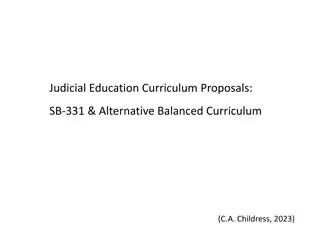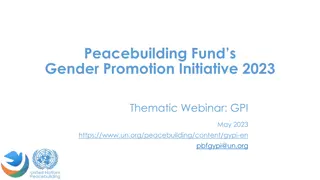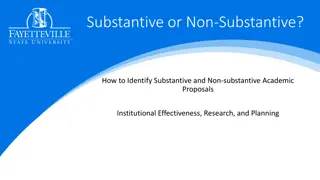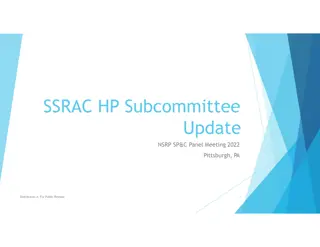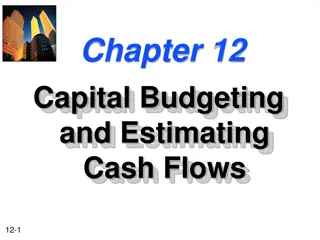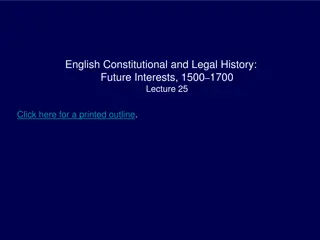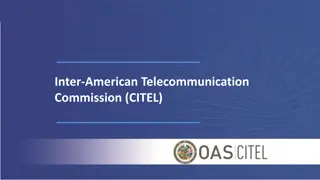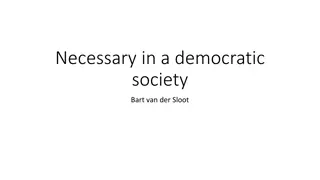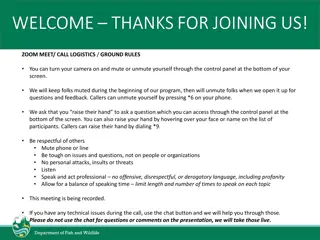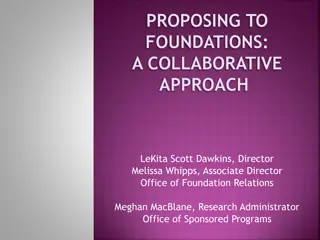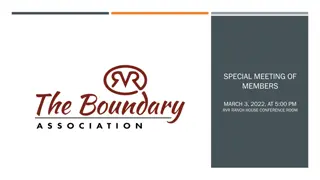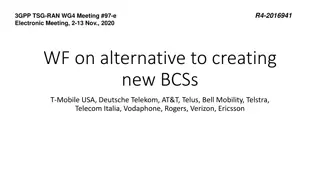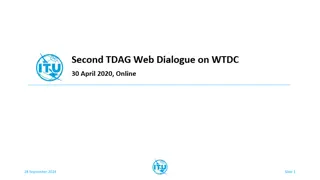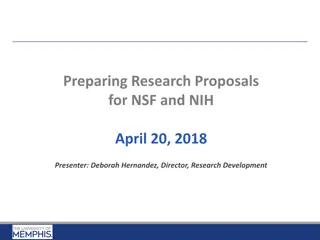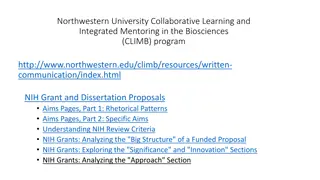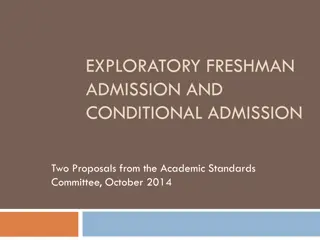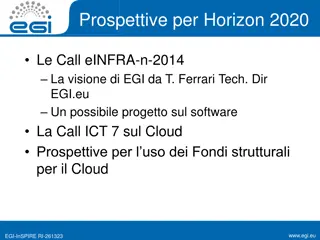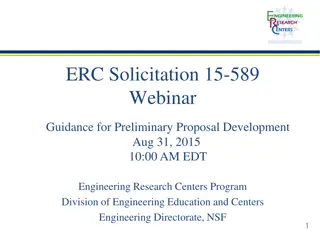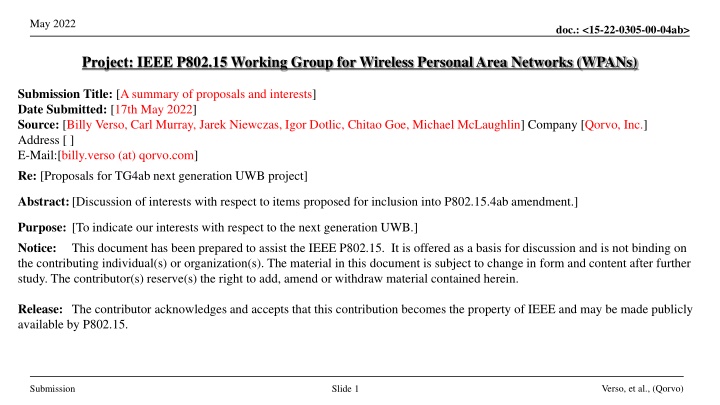
Next Generation UWB Project Proposals Summary
Explore the summary of proposals and interests for the next generation UWB project presented by Qorvo in the IEEE P802.15 Working Group submission. Topics include data modulation rates, advanced coding, multi-millisecond ranging, low-power wake-up radio, sensing capabilities, and interference mitigation techniques.
Download Presentation

Please find below an Image/Link to download the presentation.
The content on the website is provided AS IS for your information and personal use only. It may not be sold, licensed, or shared on other websites without obtaining consent from the author. If you encounter any issues during the download, it is possible that the publisher has removed the file from their server.
You are allowed to download the files provided on this website for personal or commercial use, subject to the condition that they are used lawfully. All files are the property of their respective owners.
The content on the website is provided AS IS for your information and personal use only. It may not be sold, licensed, or shared on other websites without obtaining consent from the author.
E N D
Presentation Transcript
May 2022 doc.: <15-22-0305-00-04ab> Project: IEEE P802.15 Working Group for Wireless Personal Area Networks (WPANs) Submission Title: [A summary of proposals and interests] Date Submitted: [17th May 2022] Source: [Billy Verso, Carl Murray, Jarek Niewczas, Igor Dotlic, Chitao Goe, Michael McLaughlin] Company [Qorvo, Inc.] Address [ ] E-Mail:[billy.verso (at) qorvo.com] Re: [Proposals for TG4ab next generation UWB project] Abstract: [Discussion of interests with respect to items proposed for inclusion into P802.15.4ab amendment.] Purpose: [To indicate our interests with respect to the next generation UWB.] Notice: This document has been prepared to assist the IEEE P802.15. It is offered as a basis for discussion and is not binding on the contributing individual(s) or organization(s). The material in this document is subject to change in form and content after further study. The contributor(s) reserve(s) the right to add, amend or withdraw material contained herein. Release: The contributor acknowledges and accepts that this contribution becomes the property of IEEE and may be made publicly available by P802.15. Verso, et al., (Qorvo) Submission Slide 1
May 2022 doc.: <15-22-0305-00-04ab> Introduction This submission presents an overview summary of various items of interest proposed at TG4ab for inclusion into the IEEE 802.15.4ab amendment. In general, our main interests relate to enhancements based on the HRP UWB PHY. Summary of items of interest: Data modulation rates and advanced coding for data communication. Multi-millisecond ranging with and without tightly coupled narrowband assistive radio. Low power wake-up radio based on UWB modulation. Sensing capability. Preamble sequences and other interference mitigation techniques. Other ideas Verso, et al., (Qorvo) Submission Slide 2
May 2022 doc.: <15-22-0305-00-04ab> HRP UWB PHY Data Modulation Rates TG4ab has recognised the need for data rates to support higher capacity short-range links. Starting from HPRF 4z data rate of 31.2 Mb/s, doubling up to 62.4 Mb/s and 124.8 Mb/s. And, for lower data rates to support longer-range or higher sensitivity links. Options: starting from HPRF mode 4z data rate of 7.8 Mb/s, and, perhaps defining a higher PRF 7.8 Mb/s. Halving this to create a 3.9 Mb/s rate, and maybe a lower one? Consider also a multi-millisecond fragment based low data rate option. Other aspects: Potential for preamble sequence changes to reduce interference of new applications using new data rates. Possibility for PHR change for new data rates, whilst retaining the capabilities provided by the HPRF mode PHR. Multiple submissions have shown peoples interest in this topic. We are already discussing with some interested parties (see 15-22-0274-00) and would welcome the involvement of others to continue convergence to a consensus view on the HRP UWB PHY data modulation enhancements for P802.15.4ab Verso, et al., (Qorvo) Submission Slide 3
May 2022 doc.: <15-22-0305-00-04ab> HRP UWB PHY Data Coding There are good arguments in favour of including an advanced coding scheme. For larger frame sizes, we see that ~3 dB of benefit can accrue from using an advanced code, with similar performance levels being delivered by LDPC, Polar and Turbo codes. For PHR and shorter packets there are benefits to continue using the existing convolution code, although we should also consider the utility of the SECDED for the new data rate modulations. We would see the convolutional code (i.e., the K=7 code specified in 4z) as the baseline code for new data rates with a mandatory support requirement for this code. And, then having a single advanced coding scheme optionally specified. To move forward we have been discussing this with some interested parties and have agreed to support LDPC (as already specified in 802.11n) as the primary candidate. Document 15-22-0274-00 captures this agreement. We would welcome agreement from others to continue convergence to a consensus view on the HRP UWB PHY optional advanced coding scheme for P802.15.4ab Verso, et al., (Qorvo) Submission Slide 4
May 2022 doc.: <15-22-0305-00-04ab> HRP UWB PHY Multi-Millisecond Ranging For enhanced sensitivity / long-range ranging we support including multi-millisecond ranging (MMR) in the 4ab standard, and we see a couple of options for how it might be achieved. Option A: Tightly coupled narrowband (TC-NB) radio to seed carrier timing before UWB MMR starts. This is the main method proposed, (see 15-22-0262-01), but some markets/applications may not like an additional radio, especially if the products already have a second radio (e.g., like Bluetooth LE used in FiRa protocols) Option B: Loosely coupled radio to indicate slot start timing and UWB itself (e.g., using a CZC coded sequence or similar) to seed carrier timing as part of the MMR sequence. This second option may be favored for certain cost sensitive applications, which may benefit by avoiding the complexity of adding the TC-NB. This loosely coupled radio could be the Bluetooth LE already present/used in existing industry protocols (e.g., CCC and FiRa), Perhaps there is also a UWB only option C, if the UWB WU radio can give a start time with enough precision. This thought leads us to point out that wake-up needs to be considered as part of the options Wake-up could be achieved using the TC-NB radio or a loosely coupled radio (e.g., BLE as CCC/FiRa), or using the UWB WU radio that we proposed in 15-21-0557 with some compelling benefits (see 15-22-0282). The options of MMR are further summarized on the next slide Verso, et al., (Qorvo) Submission Slide 5
May 2022 doc.: <15-22-0305-00-04ab> HRP UWB PHY MMR choices We see the benefit of multi-millisecond ranging MMR and very much support its use where increased ranging sensitivity is needed. Looking at the phases of a ranging exchange and the possible technology options: PHASE 0 PHASE 1 PHASE 2 PHASE D Wakeup WU-UWB BLE TC-NB* Others? MMR Ipatov preamble CZC preamble Golay preamble Others? + STS Data Communication TC-NB UWB 4z/4ab lower rates BLE MMD* Carrier Time Seeding TC-NB CZC Others? This is a lot of choices and, with the possibility of other options being proposed, is quite complex. To reduce complexity and promote interworking, TG4ab needs to converge on a smaller number of choices for the 4ab standard. We will work on this with our 15-22-0262 co-authors and other interested parties. * TC-NB == Tightly coupled narrowband. MMD == Multi-millisecond data (see 15-22-0283). Verso, et al., (Qorvo) Submission Slide 6
May 2022 doc.: <15-22-0305-00-04ab> Wake-up Submission 15-21-0557 proposed a low-power long-range UWB wakeup radio receiver. This is based on 4 s bursts of random pulses at 64 MHz PRF (e.g., like STS from 802.15.4z) to signal bits using OOK. Submission 15-22-0282 shows how this stacks up against narrowband wake-up radios. Having a native UWB wake-up capability is quite compelling especially if it has significant battery life benefits compared to the alternative technologies. We would propose to include this UWB wake-up radio in 4ab as an option: On the RX side this would need a dedicated receiver circuit to be included to wake up the sleeping device. On the TX side, an IEEE 802.15.4z transmitter should be able to send an appropriate sequence (e.g., bursts of STS) with minor modification, to turn it on/off to form the 1 ms spaced OOK 4 s bursts, and possibly the inclusion of a PA. One could imagine mobile phones incorporating the wake-up transmit capability, with the wake-up receive capability only being implemented in low power tags. Verso, et al., (Qorvo) Submission Slide 7
May 2022 doc.: <15-22-0305-00-04ab> HRP UWB sensing There is merit in building on the channel sounding capabilities of 802.15.4z to provide sensing functionality of presence detection, gesture recognition and environmental mapping, etc. There are some proposed PHY level enhancements that can improve those capabilities, and the elements we wish to examine are: Improved channel sounding sequences, e.g., as proposed in 15-22-0280-01. Pros and cons of lower PRF modes, e.g., 16 MHz PRF seems a good candidate for some applications. Pulse shape for sensing. Different channel frequencies and bandwidths. At MAC level the CIR signaling for multi-static sensing should look to minimize traffic load whilst not imposing any significant calculation burden on the sending nodes. We would be happy to participate with other interested parties in converging on the PHY modes for multi-static sensing and on MAC level CIR signaling, and on MAC level coordination proposals to reduce interference between sensing applications and other UWB users. Verso, et al., (Qorvo) Submission Slide 8
May 2022 doc.: <15-22-0305-00-04ab> HRP UWB PHY Preambles There have been several proposals for alternative preamble sequences, including: 15-21-0377-02 proposing m-sequences. 15-21-0590-00 proposing chip rate clock tuning . 15-22-0178-00 proposing CZC codes, and 15-22-0280-01 proposing SZC codes. 15-22-0243-00 proposing Golay codes. 15-22-0284-00 proposing variable-length and repetitive pseudo-random symbols. The goals of these various proposals are aligned: To reduce interference between new and legacy 4z modes, and between different networks of users of the new modes. To improve performance of the sequences, e.g., for improved sensing properties, carrier timing acquisition, etc. Clearly, it is undesirable for implementors to have to support multiple preamble options. We would welcome working with other interested parties to evaluate the merits of the different proposals with the aim to converge on HRP UWB PHY preambles for P802.15.4ab. Verso, et al., (Qorvo) Submission Slide 9
May 2022 doc.: <15-22-0305-00-04ab> HRP UWB PHY other ideas There have been other ideas proposed for various elements of functionality, both during this May interim session and in previous sessions. We are cautious about adding additional PHY modes and requirements beyond what we have already covered in the earlier slides of this submission. TG4ab needs to consider which items of proposed functionality are reasonable to include in 4ab as options And which might be better not to include into 802.15.4 at this time. Adding everything that everyone has proposed is probably not a good idea. Ideally independent participants in TG4ab should converge and agree on the inclusion of items based on practical evaluation of their merits via simulation or other means. We would welcome working with interested parties to evaluate the merits of the different proposals with the aim to converge on the set of functionality for P802.15.4ab inclusion. Verso, et al., (Qorvo) Submission Slide 10
May 2022 doc.: <15-22-0305-00-04ab> Conclusion This submission has laid out our main interests with respect to the 802.15.4ab amendment project. There is substantial work to do to produce the 802.15.4ab amendment: Converging on items for inclusion and generating and honing the text to make the draft. Then the balloting and comment resolution, (everyone s favorite part). We look forward to working with interested TG4ab participants to continue convergence to a consensus on the content for the 802.15.4ab amendment and to work on the preparation of the draft. Verso, et al., (Qorvo) Submission Slide 11
May 2022 doc.: <15-22-0305-00-04ab> THE END. Verso, et al., (Qorvo) Submission Slide 12

